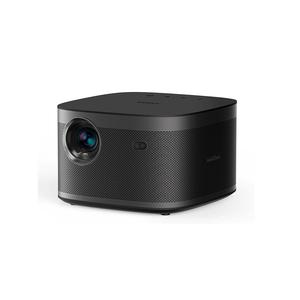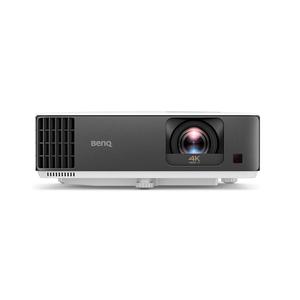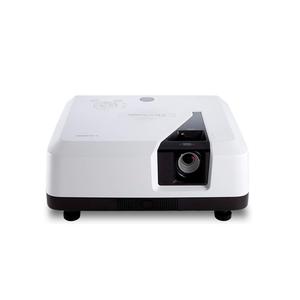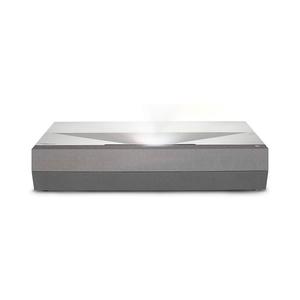What is a DLP Projector
Imagine transforming any wall or screen into a larger-than-life canvas, where movies come to life, presentations captivate audiences, and gaming worlds stretch beyond imagination. Enter the world of DLP projectors, a cutting-edge technology that has revolutionized the way we experience visual content. Whether you're a tech enthusiast or someone looking to enhance their audio-visual setup, understanding the fundamentals of a DLP projector is key to unlocking a world of immersive entertainment.
In this blog post, we will delve into the fascinating world of DLP projectors, exploring their inner workings, benefits, and applications. Join us as we demystify this advanced projection technology, unraveling the secrets behind its stunning image quality, exceptional color accuracy, and seamless performance. From home theaters to boardrooms, DLP projectors have become the go-to choice for those seeking superior visual experiences. So, fasten your seatbelts and prepare to embark on a journey that will illuminate the brilliance of DLP projectors, revealing why they have become an indispensable tool in the world of projection technology.
Short answer: A DLP projector, short for Digital Light Processing projector, is a cutting-edge technology that revolutionizes visual experiences. At its core, a DLP projector utilizes a Digital Micromirror Device (DMD) chip with thousands or millions of tiny mirrors that tilt rapidly to reflect light towards or away from the projection surface. This precise manipulation of light allows DLP projectors to create stunning images with exceptional color accuracy, high contrast ratios, and fast response times. Whether you're setting up a home theater, delivering impactful presentations, or immersing yourself in gaming worlds, understanding the fundamentals of a DLP projector is key to unlocking a world of immersive entertainment.
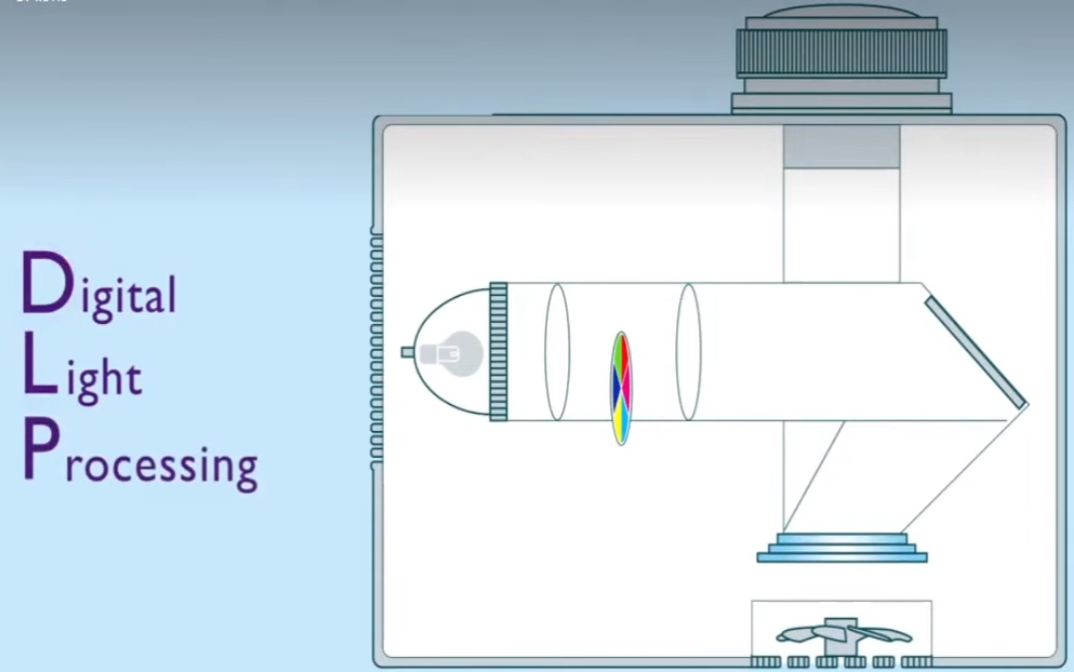
What is DLP and How It Works
DLP, which stands for Digital Light Processing, is a display technology developed by Texas Instruments (TI) that uses micro mirrors to project images. At the heart of a DLP projector lies an array of thousands or even millions of tiny mirrors, each capable of tilting rapidly to reflect light either towards or away from the projection surface. These mirrors are controlled digitally, allowing for precise manipulation of the projected image.
Here's a step-by-step explanation on how exactly is DLP projectors work:
- Light Source: The DLP projector utilizes a light source, usually a lamp or LED, to generate a bright beam of light.
- Color Wheel: The light passes through a color wheel that consists of different colored filters (red, green, and blue). The color wheel spins rapidly, allowing specific colors to pass through at different times.
- Digital Micromirror Device (DMD): The core component of a DLP projector is the DMD chip, which contains an array of tiny mirrors, with each mirror corresponding to a single pixel on the projected image.
- Reflection of Light: The light from the color wheel is directed towards the DMD chip. The mirrors on the DMD chip tilt in response to the digital image signal they receive. When a mirror tilts towards the light source, it reflects light onto the projection surface, creating a bright pixel. When a mirror tilts away from the light source, it reflects light elsewhere, resulting in a dark pixel.
- Color Mixing: As the DMD chip reflects light, the colors from the color wheel are combined to create the desired color for each pixel. By rapidly switching the mirrors on and off, the DMD chip can create a wide range of colors and shades.
- Projection Lens: The reflected light then passes through a projection lens, which focuses and magnifies the image, directing it onto the desired projection surface such as a screen or wall.
- Image Quality and Refresh Rate: The rapid mirror tilting of the DMD chip allows DLP projectors to display high-resolution images with excellent color accuracy and contrast. The refresh rate, or how quickly the mirrors can switch on and off, contributes to smooth video playback without motion blur.
- Control and Signal Processing: The DLP projector receives the image signal from a connected device such as a computer, Blu-ray player, or gaming console. This signal is processed and converted into instructions for the DMD chip, determining the position and tilt of each mirror to reproduce the desired image.
The DLP technology works in conjunction with a light source, typically a lamp or LED, which projects light onto the array of mirrors. Depending on the digital input signal, the mirrors tilt either towards the light source, creating bright pixels, or away from it, producing dark pixels. By rapidly switching the mirrors on and off, DLP projectors can create a wide range of shades and colors, resulting in high-quality, vibrant images.
One of the notable advantages of DLP technology is its ability to produce excellent contrast ratios, which means it can display deep blacks and bright whites simultaneously. Additionally, DLP projectors are known for their fast response times, making them ideal for displaying fast-moving content such as action-packed movies or video games. Whether it's a cinema screen, a classroom, or a conference room, DLP projectors offer a versatile solution for a variety of applications, bringing visuals to life with impressive clarity and detail.
What are the Alternatives to DLP Projectors
Alongside DLP projectors, there are several other types of projectors available, each utilizing different technologies. Here are a few notable alternatives to DLP projectors:
- LCD Projectors: LCD (Liquid Crystal Display) projectors work by passing light through a transparent LCD panel that acts as a light valve. The panel divides the light into three primary colors (red, green, and blue) and combines them to create a full-color image. LCD projectors are known for their vibrant colors and sharp image quality. They are commonly used in home theaters, classrooms, and business presentations.
- LCoS Projectors: LCoS (Liquid Crystal on Silicon) projectors use a reflective liquid crystal layer placed on a silicon chip. This technology combines the benefits of both DLP and LCD, producing high contrast ratios, accurate colors, and smooth images. LCoS projectors are often favored by home theater enthusiasts and professionals who seek exceptional picture quality.
- Laser Projectors: Laser projectors employ lasers as the light source instead of traditional lamps or LEDs. They offer several advantages, including longer lifespan, lower maintenance, and better color accuracy. Laser projectors are known for their high brightness levels and wide color gamut, making them suitable for large venues, outdoor displays, and immersive experiences.
- LED Projectors: LED projectors utilize light-emitting diodes (LEDs) as the light source. LEDs are energy-efficient, have a longer lifespan, and provide consistent brightness over time. LED projectors are compact, portable, and ideal for small-scale presentations, home entertainment, and on-the-go use.
- LAMP Projectors: LAMP (Lamp-Assisted Projection) projectors are the traditional projectors that use a lamp as the light source. They have been widely used in various settings for many years. While lamps require periodic replacement, they still offer cost-effective projection solutions for classrooms, boardrooms, and small venues.
Each type of projector has its unique characteristics and advantages, catering to different user preferences, environments, and applications. Understanding these options can help you choose the projector that best suits your specific needs and enhances your visual experiences.
If you're on the hunt for impressive projector models, here are our top six picks for 2024:
- Excellent 4K image quality
- Stylish and premium design
- Affordable price
- Intelligent screen adaptation technology
- Powerful and high-quality Harman Kardon speakers
- Android TV 10.0 with a rich selection of applications and functions
- Short-throw projection ideal for small spaces
- 4K resolution with low input lag
- Android TV integration
- Compatible with major gaming consoles
- Easy setup with flexible image adjustment features
- 4K UHD resolution with 3,300 lumens
- Long-lasting light source up to 20,000 hours
- HDR compatibility and SuperColor technology
- Flexible connectivity with HDMI, USB, and more
- 3D Blu-ray ready with 360-degree orientation
- Decent 480p image quality with support for HDR10
- Simple and compact design
- Portability and long battery life
- Dolby Digital Plus and Dolby Atmos
- Android 7.1 with sufficient choice of apps and features
- Highly portable with 180-degree rotation
- Auto Leveling, Focus, and Keystone
- Access to a wide range of smart entertainment options
- Dedicated Gaming Hub
- Immersive 360-degree audio with external audio connectivity options
- Ultra-short throw design
- Laser light source for long-lasting and bright performance
- Built-in soundbar with Dolby Digital 2.0
- Smart TV interface with voice control and streaming apps
FAQ About DLP Projectors
What does DLP stand for?
DLP stands for Digital Light Processing.
How does a DLP projector create colors?
DLP projectors utilize a color wheel that spins rapidly, allowing specific colors (red, green, and blue) to pass through at different times. The reflected light from the mirrors on the DMD chip combines these colors to create the desired color for each pixel.
Are DLP projectors suitable for both home and business use?
Yes, DLP projectors are versatile and can be used in both home and business environments. They are commonly used for home theaters, presentations, classrooms, conferences, and other applications that require high-quality projection.
What are the advantages of DLP projectors over other types?
Some advantages of DLP projectors include excellent color accuracy, high contrast ratios, fast response times, and the ability to display sharp, vibrant images. They are also known for their reliability, low maintenance, and long lifespan.
Do DLP projectors suffer from the "rainbow effect"?
Some people may experience a brief "rainbow effect" when using DLP projectors. It appears as momentary flashes of red, green, and blue colors in the image. However, modern DLP projectors have greatly reduced this effect, and it is usually not noticeable for most viewers.
Can DLP projectors display 3D content?
Yes, many DLP projectors support 3D content. To enjoy 3D projection, you will need compatible 3D content, glasses, and sometimes an additional emitter or device for synchronization.
What should I consider when choosing a DLP projector?
Factors to consider include the desired image quality and resolution, brightness level, connectivity options, throw distance (the distance between the projector and the projection surface), and compatibility with your intended source devices (such as computers, Blu-ray players, or game consoles).
Do DLP projectors require regular maintenance?
DLP projectors generally require minimal maintenance. However, it is recommended to clean the projector's air filters periodically to prevent dust buildup, ensure proper airflow, and extend the lifespan of the projector.
Can I use a DLP projector in daylight or well-lit environments?
DLP projectors can be used in daylight or well-lit environments, but their image quality and visibility may be affected by ambient light. For optimal results, it is best to use DLP projectors in darker or controlled lighting conditions.
